A Look at Obscure Food Trends
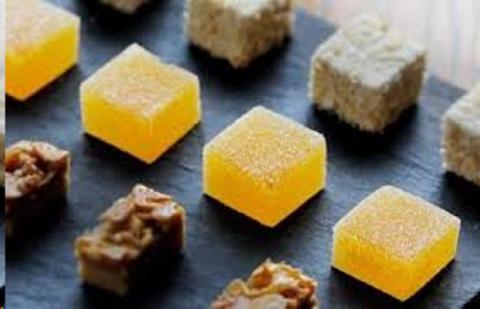
For decades, even the beloved cartoon character Popeye couldn’t get kids (or adults) to eat their greens. But when eating kale became trendy, it was perfectly normal to skip the steak and opt for a citrus kale salad with cranberries and walnuts instead of the juicy red meat. In fact, the kale trend was so widespread, October 1st was declared “National Kale Day.” However, this concept that new, unusual, or just plain boring foods had selling power because they were “trendy” isn’t reserved for the power green.
In 2000, Sex and the City’s Carrie Bradshaw brought new light to an old classic, the cupcake. Soon, cupcakeries were popping up coast to coast. There was the introduction of self-serve frozen yogurt bars that boomed, and it even became popular to add bacon to everything-- especially chocolate.
Foods that were certain to phase out (drinkable yogurt, anyone?), held on and became the norm. Other foods, like the personalized chicken pot pie, created to comfort a mourning nation after the tragedy of September 11, 2001, had unexpected sales up and then back down. But even the most picky eater wouldn’t be surprised if food trends like the cronut-- a cross between a croissant and a doughnut--stuck it out for the long haul.
There were, however, trendy foods, that looking back over the decade, many can’t believe they swallowed. Think purple ketchup, Pop Rock applesauce, ear wax-flavored jelly beans, and Peel & Eat Tuna. Here’s a look at the past decade’s most obscure food trends.
2000:
The nation was exploring the Internet, MP3 music had just hit the scene, and George W. Bush would run in the tightest race in presidential history. The nation was consuming packaged food liked never before, thanks to brand new products like StarKist Tuna in a pouch and Jello-O brand bars, Dessert Delights.
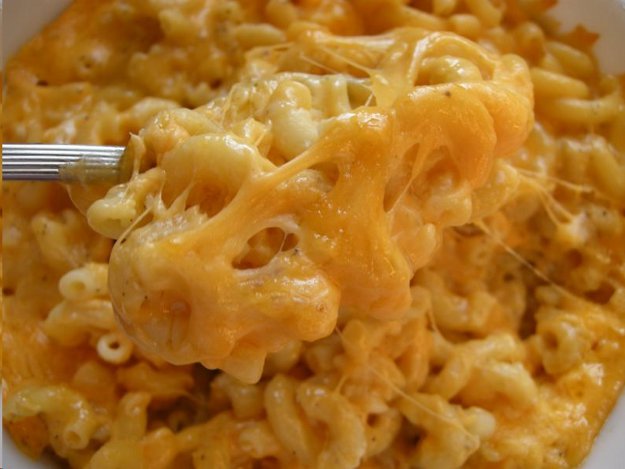
General Mills takes advantage of the packaged food trend and launches one of their most unusual products to date: Milk ‘n Cereal bars. The three different flavored bars featured the top cereal brands (Honey Nut Cheerios, Cinnamon Toast Crunch, and Chex) and provided a bowl and spoon feel on the go. Fortunately, portable (dehydrated and sweetened milk) wouldn’t stay on the market for long.
Perhaps there was a push for portable breakfast that year because a line of “Push n’Eats” known as IncrEdibles was also launched by an Ohio-based company. These microwavable cylinders were similar to push-up ice cream and available in three flavors of scramble eggs and three different kinds of macaroni and cheese. Similar to the breakfast bar, their slogan was: “No forks, no spoons, no plates, no mess!”
The year also saw filled Eggo waffles, aka Waf-Fulls, and Pillsbury Co. tried to debut the rectangular bagel. Perhaps they were hoping to partner with famous lunch meat, as Turkey Spam surfaced to test markets in hopes of joining the American luncheon meat line as the fourth product extension.
2001:
Many remember 2001 as a year of devastation and loss. In November, Harry Potter and the Sorcerer’s Stone would open in theatres and gross $93.5 million opening weekend. Earlier that year, surgeons had successfully implanted the first AbioCor heart in a human. Perhaps, just a notably, Americans were also (willingly) eating purple ketchup.
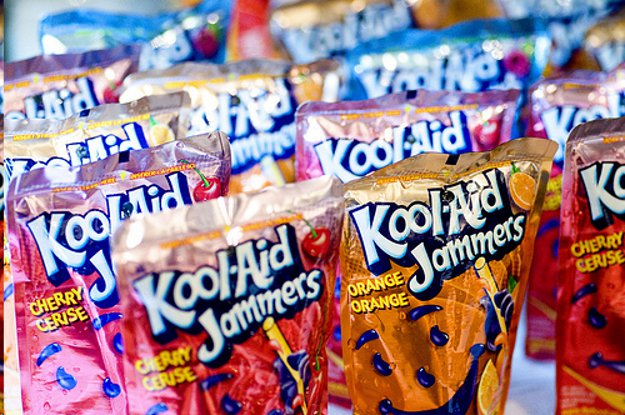
EZ Squirt, Heinz’s colored ketchup hit the market in four colors: Traditional Red, Blastin’ Green, Funky Purple, and “mystery.” Perhaps, it’s only believable people were buying the stuff because someone had also successfully patented PJ Squares: thin slices of peanut butter and jelly, individually wrapped, like American cheese. Put a square on a slice of bread and (apparently) you were ready to go.
2002:
Bush vows to expand the fight on terrorism. However, food trends are not so risky.
Companies debut portion-controlled products and “the mini bag.” The nation sees first ever mini-sized popcorn bags. People turn to comfort foods like chicken pot pie, mac n’ cheese, and pizza in the wake of ‘01 tragedy. It’s a conservative year on the food front.
2003:
The year of the low-carb craze was in full effect in response to Arthur Agatston’s The South Beach Diet: The Delicious, Doctor-Designed, Foolproof Plan for Fast and Healthy Weight Loss. Protein was everything, especially obscure. Glugging raw eggs was no longer absurd. Luckily this trend didn’t last. Neither did dehydrated hamburger or freeze-dried meat. (Though the freeze-dried strawberry was the saving grace this year for Kellogg in their Special K Red Berries cereal). Other notably obscure trends included the Philadelphia To-go Bagel & Cream Cheese (not low carb) and eating baby food vegetables.
2004:
A year that changed the way so many live, the year Facebook launched, was also a rollercoaster year in food. Pop Rocks partnered with Mott’s, launching Magic Mixins, “Entertainment for the mouth” -- applesauce that changes colors with flavor-popping vitamin C crystals. The low-carb trend continues with different foods: Hersey’s 1g Sugar Carb bars and Kool-Aid Jammers 10 (a 10-calories version of the Kool-Aid pouch). Unfortunately (or fortunately, depending on your view), the low-carb trend would soon fade out, and with it, these briefly debuting products.
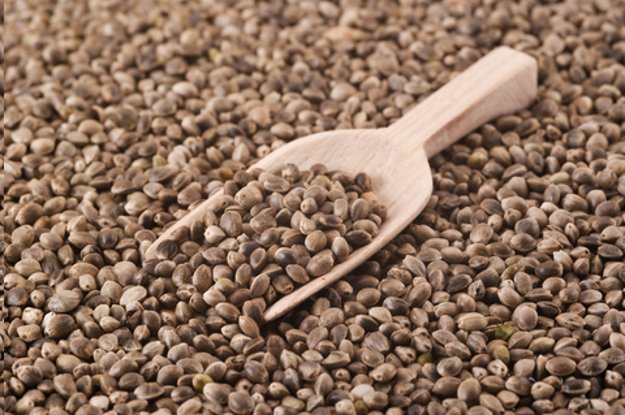
2005:
Food and media parallel once again when some of the most obscure foods to hit the market are modeled after TV shows and movies. Consumers purchase a line of edibles based on Fear Factor: slimy sour-candy octopus marinated in a plastic pouch; bacon-flavored gross-out gummy pig-out platters; green gummy frog legs with white candy bones served with a tub of red candy “blood for dipping; and the most notable product, a carton of crunchy larvae, made with real baby worms, freeze-dried and coated with flavors like cheddar cheese and Mexican spice.
And because such a weird and unusual product was able to have its 15 seconds of fame in 2005, it’s no wonder that Bertie Bolt’s Every Flavor Beans (created after the candy in the book series Harry Potter) were also popular for a moment. The beans were jelly beans sporting flavors like rotten egg, bacon, earwax, dirt, and soap. Luckily, these didn’t stick around long, either.
2006:
The country strives for a balance in food. Organic products, high fiber, and low-calorie options all hit the market. However, these foods aren’t trends--they will stick it out for years to come. Though big changes on the food front, nothing obscure on the radar this year.
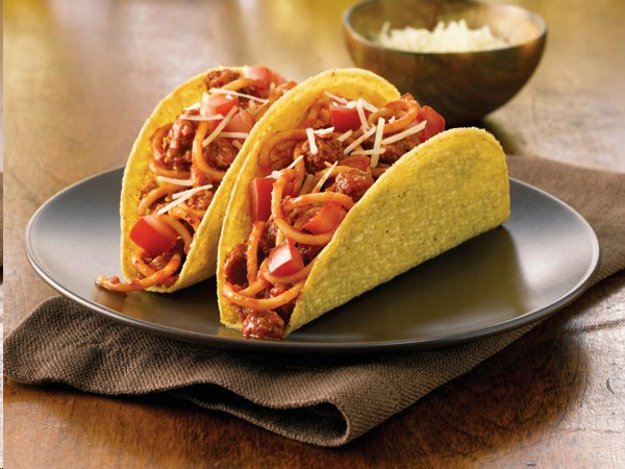
2007:
The nation sees its first increase in minimum wage in 10 years. Perhaps eager to splurge on obscure things, foods made from hemp become popular. Made from the imported hemp seed, consumers purchase hemp milk, hemp seed butter, hemp seed oil, hemp shakes, hemp bagels, hemp bread, hemp tortillas, and more. The food is apparently rich in omega-3s and other “good-for-you” oils, and has a nutty taste. There is no longer a fear of carbs, though portion control is still popular. Baker's Inn creates the "Short Loaf" sliced bread, a smaller, portion-controlled loaf of bread to accommodate smaller households and promote less waste.
Other odd household staples this year include Chicken of the Sea’s “Peel & Eat Tuna and Salmon Cups”--exactly what it sounds like, and Kraft’s “Fresh Creations Salads,” portable salads with Oscar Mayer meat, Planters nuts, and Kraft cheese. These salads would soon be phased out in the next few years by super greens
2008:
Unfortunately, the year is remembered for its recession. People are eating at home more, buying cheaper foods, and less likely to spend a lot on things they don’t need. However, so many were able to justify the purchase of “caffeinated foods.” In the category: caffeinated potato chips, caffeinated sunflower seeds, a huge variety of energy drinks and bars, and caffeinated candy.
2009:
In January, President Barack Obama is sworn into office. The national unemployment rate hits 8.1 percent, the highest since 1983. The media was buzzing with celebrities that would soon be common household names: Taylor Swift, Lady Gaga, Miley Cyrus. Movies like The Blindside and Up would be nominated for Academy Awards.
The next five years would debut such iconic and obscure foods as the spaghetti taco (2010), the bacon doughnut (2012/2013), and the cake pop (2011/2012). And though it was really just five years ago, it doesn’t feel that long ago at all. Because of this, it’s hard to tell if what we were eating from 2009 until now was obscure and trendy or maybe normal. Starbucks does still carry cakepops and iCarly fans still ask their parents for spaghetti tacos.
Many claim that gluten-free waffles and green smoothies will remain as much of our diet as a chicken dinner. Others think eliminating wheat will be just like the elimination of carbs, a trend that is here today and gone tomorrow. Perhaps in another 10 years we will look back and can’t believe we were eating quinoa.
Author Bio:
Margaret Olson is a contributing writer at Highbrow Magazine.






























































































































































































































































































































